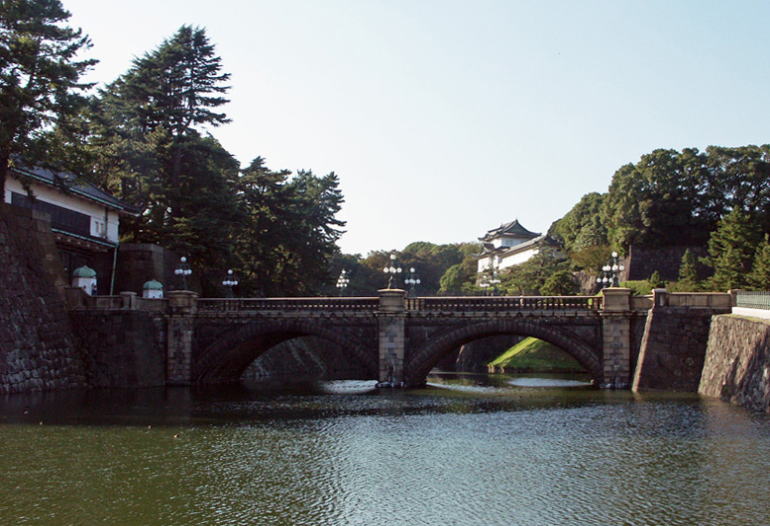 |
Bridge leading to the main entrance of the Imperial Palace
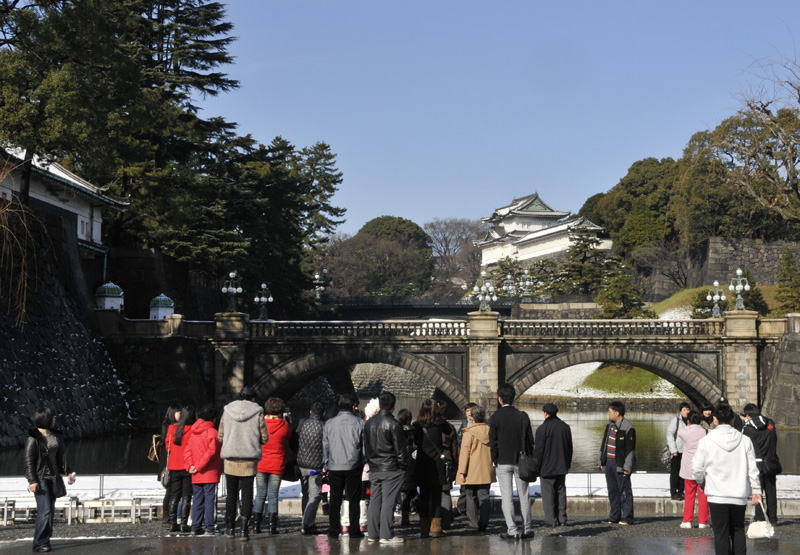
Snowscape of Nijubashi Bridge (Feb. 15, 2011)

Snowscape of Nijubashi Bridge (Feb. 14, 2013)
| Return to Top Return to Imperial Palace Contents Table |
IMPERIAL PALACE
| The Imperial Palace with its grounds is located on the site of the former
residential palace of the successive Tokugawa Shoguns in the Edo Period.
Following the Meiji Restoration in 1868, Emperor Meiji moved here from
Kyoto which had been the Imperial capital for more than a thousand years.
Since then, this is where the Emperor has resided and, as Imperial Palace,
where the various Imperial ceremonies and functions have been held. To
replace the Meiji Palace burnt down in 1945, the present Palace was built
and was completed in 1968. The Imperial Palace grounds extend over an area
of approximately 11,500,000 square meters, and are surrounded by a moat
and rampart with eight gates. (Imperial Household Agency) The Imperial Palace was built as Edo Castle by Ota Dokan in 1457 when the city was a mere village. In 1590 Tokugawa Ieyasu received the eight provinces of the Kanto Districts from Toyotomi Hideyoshi in fief and made Edo the provincial capital. When he was raised to the Shogunate upon the death of Hideyoshi, the city grew rapidly, the castle improved and it became the headquarters of the Shogun. But upon the overthrow of the Shogunate in 1868, Edo was selected as the Imperial capital and the Emperor Meiji moved there in 1869, the name being changed to Tokyo. Their Imperial Majesties resided in the palace until 1873, when it was destroyed by fire; they then moved to another palace at Akasaka whilst repairs were being carried out. Their Majesties returned to the Palace six years later when the repairs and alterations had been completed. With its wide moats flanked with trees, the massive stones and rocks of its ramparts, and its fine white towers, the Imperial Palace and grounds present a most picturesque and beautiful appearance. The outer gardens (Kokyo Mae Hiroba and Kitanomaru Koen) are open to the public throughout the year and certain parts of the inner precincts are thrown open to the public on a request basis and on special occasions in spring and autumn as well. East Garden of the Imperial Palace is open to the public everyday except on Monday and Friday. (Japanalia by Lewis Bush) Imperial Household Agency Imperial Palace Map |
 |


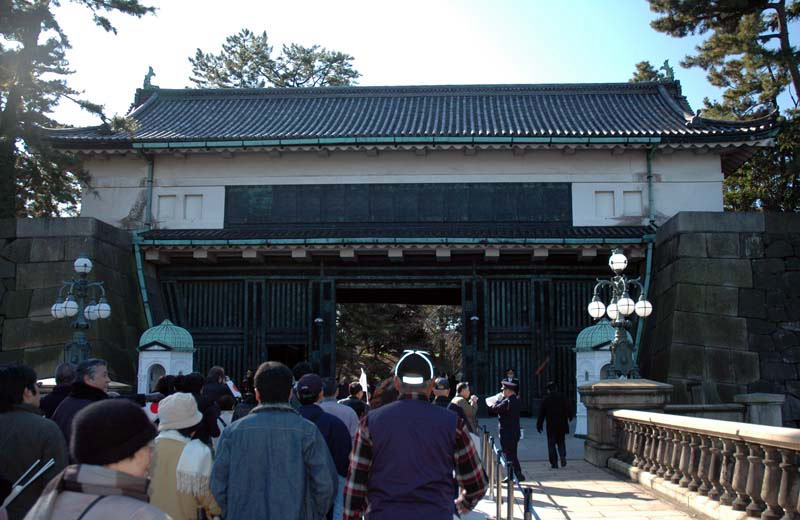
Nishinomaru Otemon Gate
Main Gate into the Imperial Palace (Open to the public on January 2 (Ippan
Sanga) and December 23 (Emperor's Birthday)
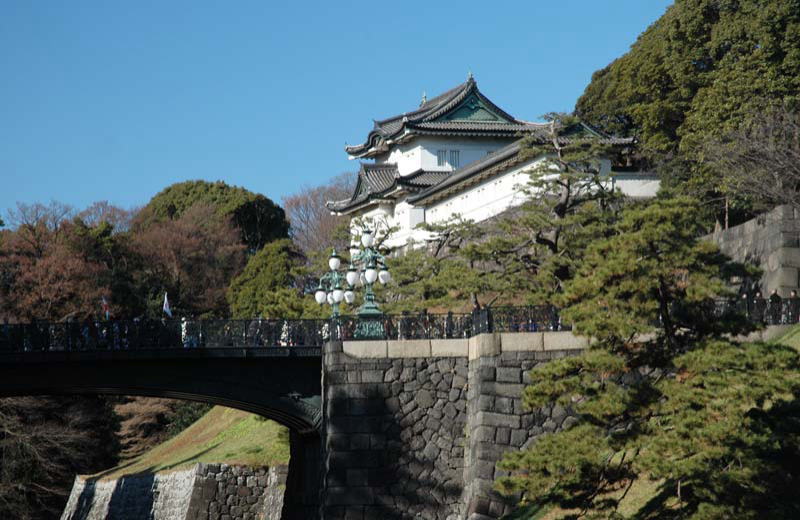
Fushimi Yagura
(The Fushimi Yagura is believed to have been moved from Fushimi Castle
in Kyoto by Iemitsu Tokugawa in 1628)

Snowscape of Fushimi Yagura (Feb. 15, 2011)
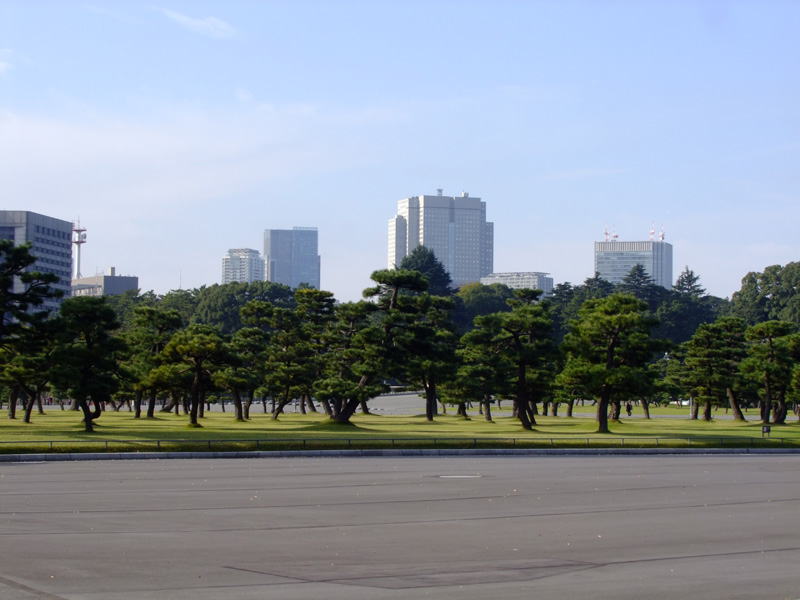
Black Pine Trees at Kokyo-Mae Garden Plaza in front of the Imperial Palace

Black Pine Trees at Kokyo-Mae Garden Plaza in front of the Imperial Palace
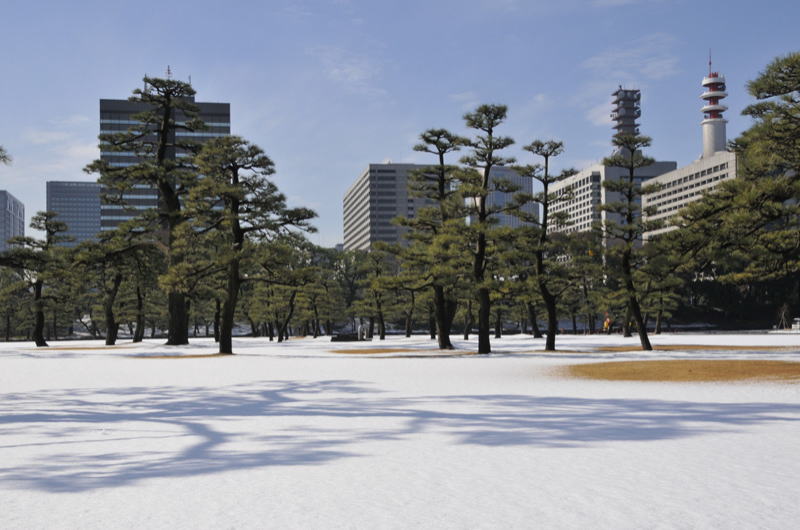
Snowscape of Black Pine Trees at Kokyo-Mae Garden Plaza (January 15, 2011)

Statue of Royal Retainer Kusunoki Masashige
(Kusunoki Masashige was a 14th century samurai who fought for Emperor Go-Daigo
in his attempt to wrestle rulership of Japan away from the Kamakura shogunate).

Hibiya Bori Moat

Fujimi Yagura
(Mt. Fuji View Tower)

Kikyo Mon Gate
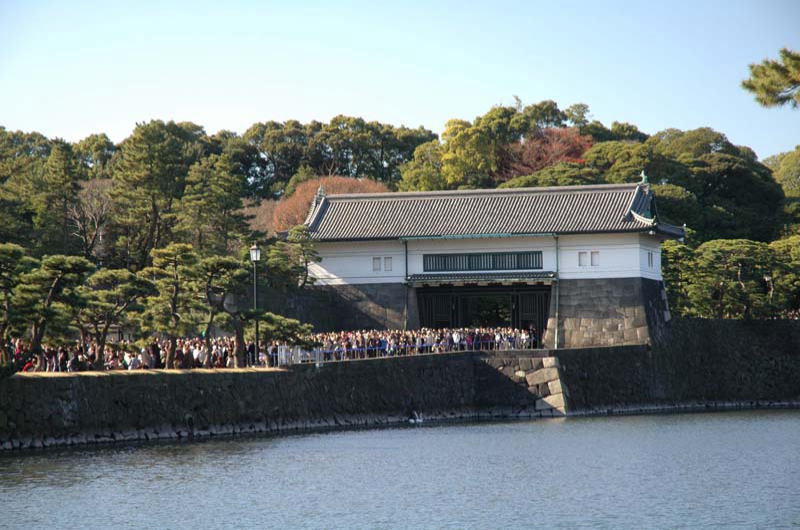
Sakashita Mon Gate
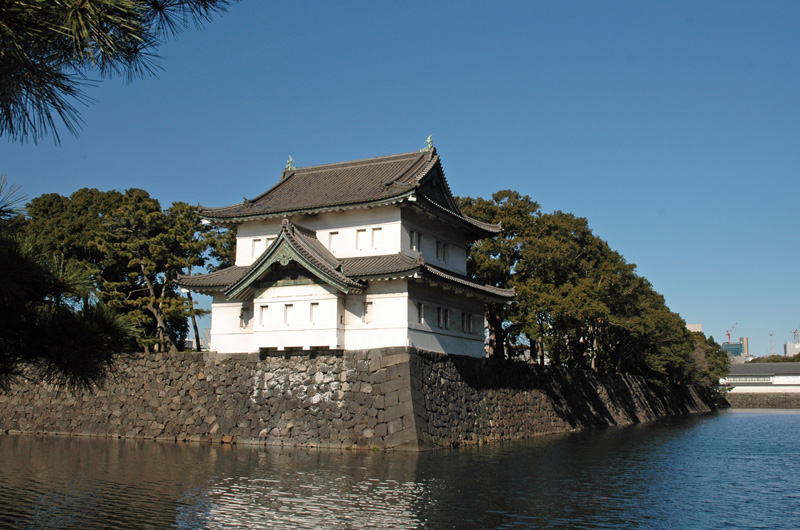
Tatsumi Yagura

Otemon Gate (Yagura is under repair construction as of 2014)

Ote Bori Moat

Ote Bori Moat Green Park
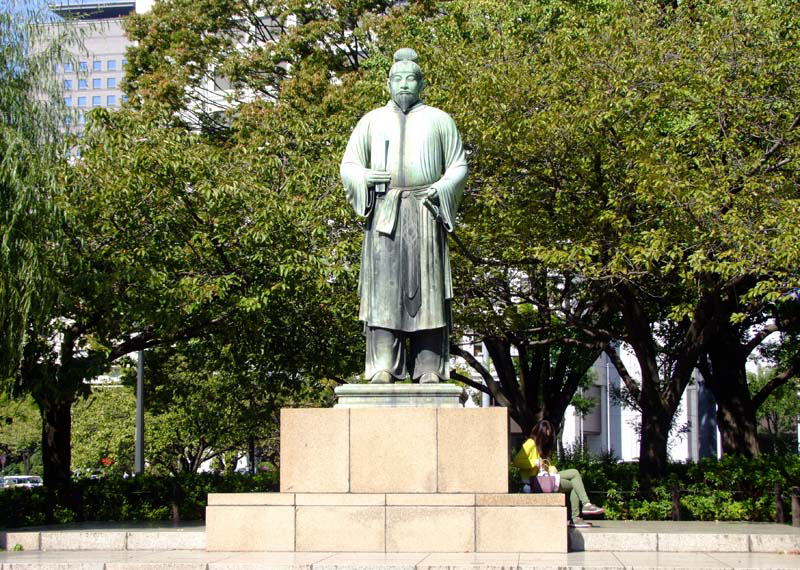
Statue of Wake no Kiyomaro at Ote Bori Moat Green Park
(Court official of the 8th century who thwarted the ambition of the powerful priest Dokyo to succeed to the throne of the emperor)
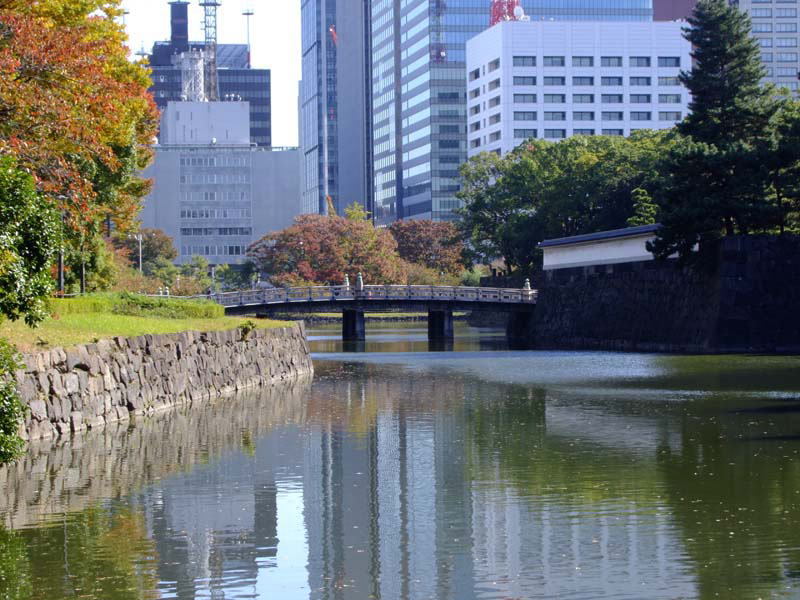
Hirakawa Bashi Wooden Bridge leading to Hirakawa Mon Gate

Hirakawa Mon Keep
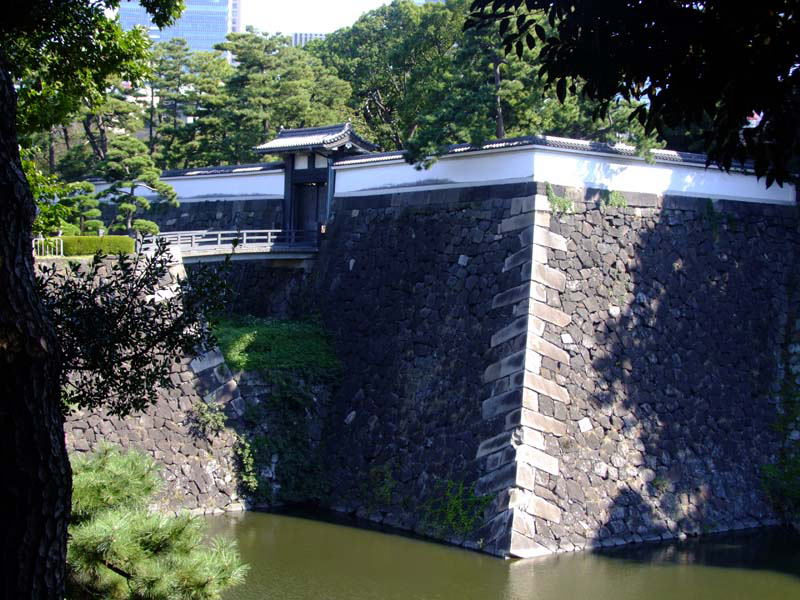
Kitahanebashi Gate
(The bridge was a bascule bridge for the defense of Honmaru Main Donjon)
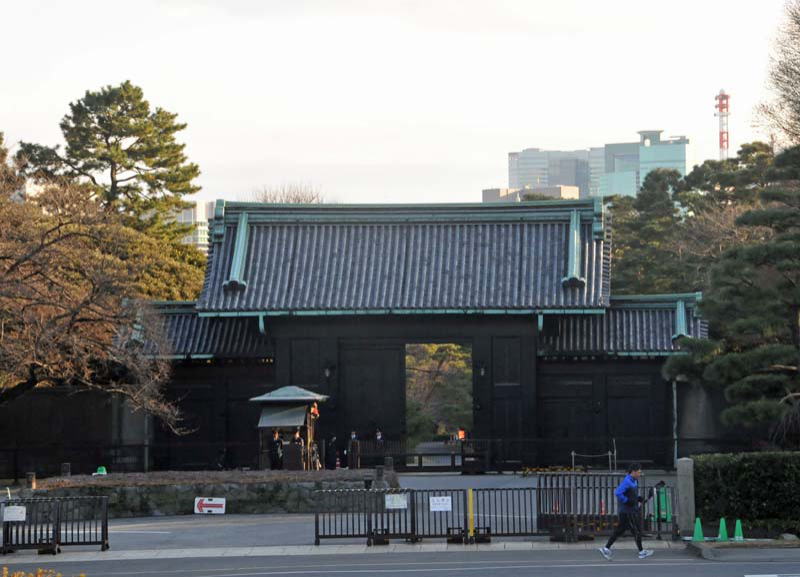
Inui Mon Gate
1.jpg)
Inui Bori Moat
(The other side of the moat is the residential grounds of the Royal Family)

Hanzo Bori Moat
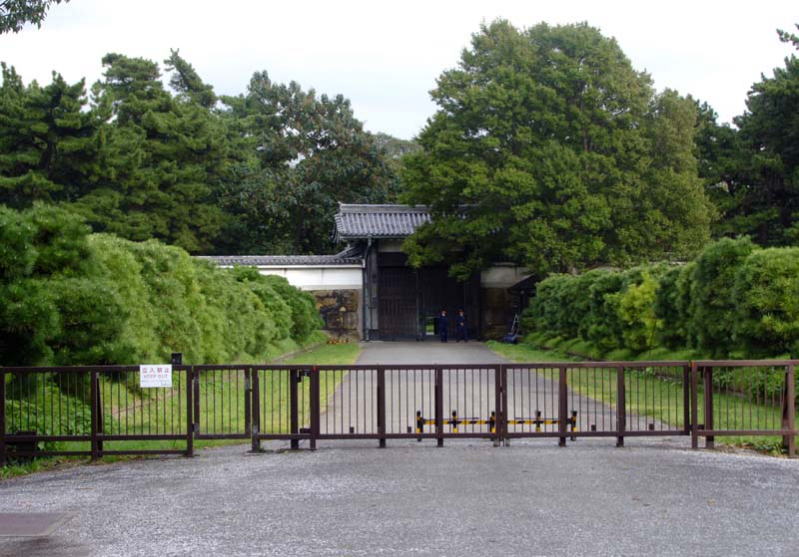
Hanzomon Gate
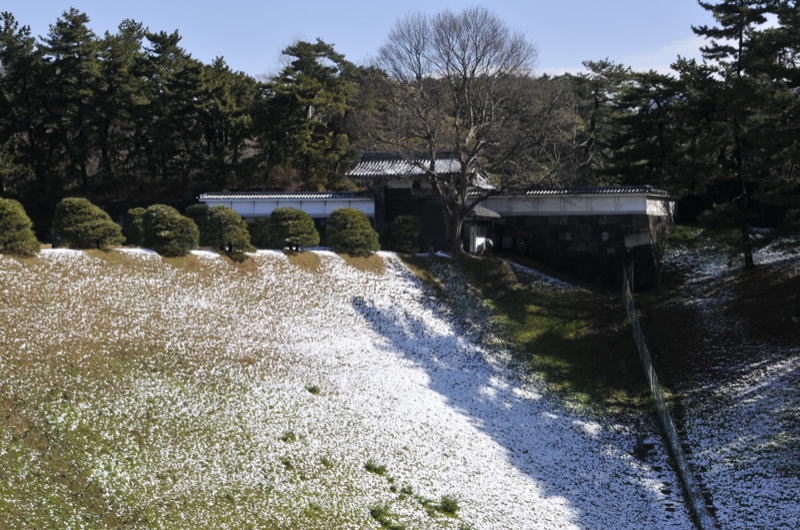
Snowscape of Hanzomon Gate (Jan. 15, 2011)
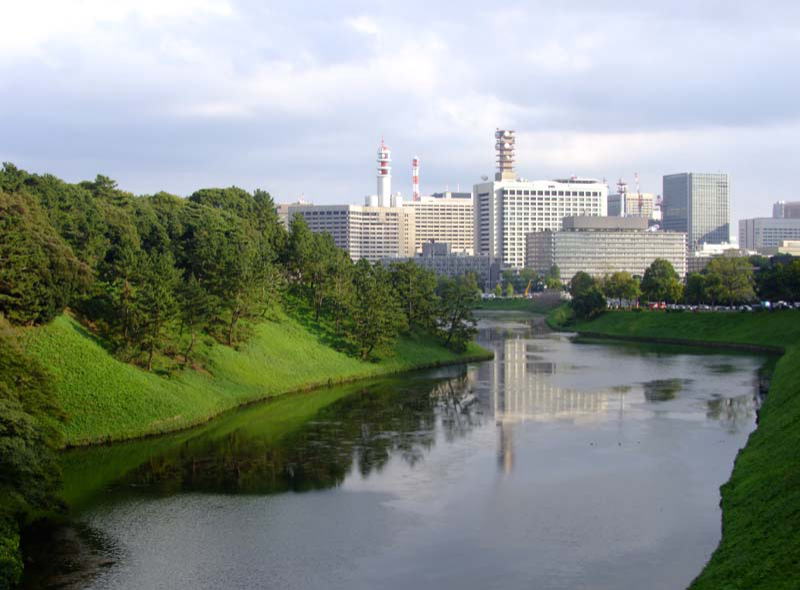
Sakurada Bori Moat viewed from Hanzomon Area

Snowscape of Sakurada Bori Moat viewed from Hanzomon Area (Jan. 15, 2011)
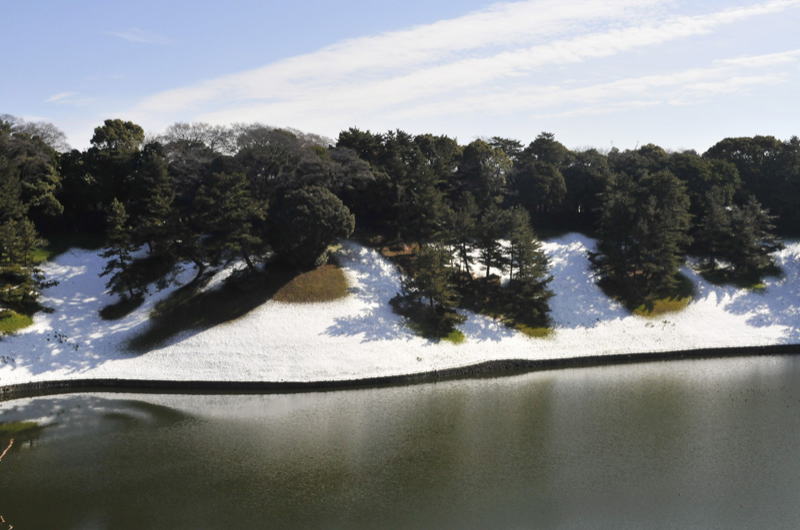
Snowscape of Sakurada Bori Moat (Jan. 15, 2011)
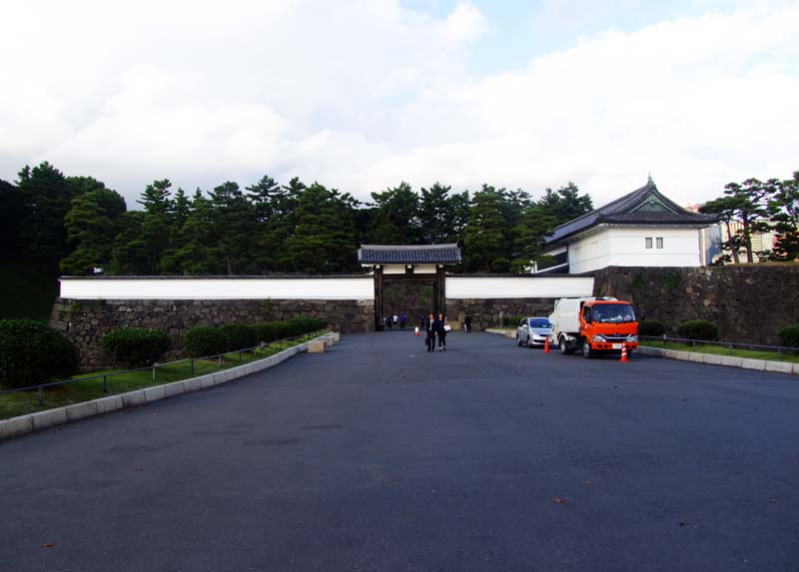
Sakuradamon Gate

Sakuradmon Watari Yagura Keep
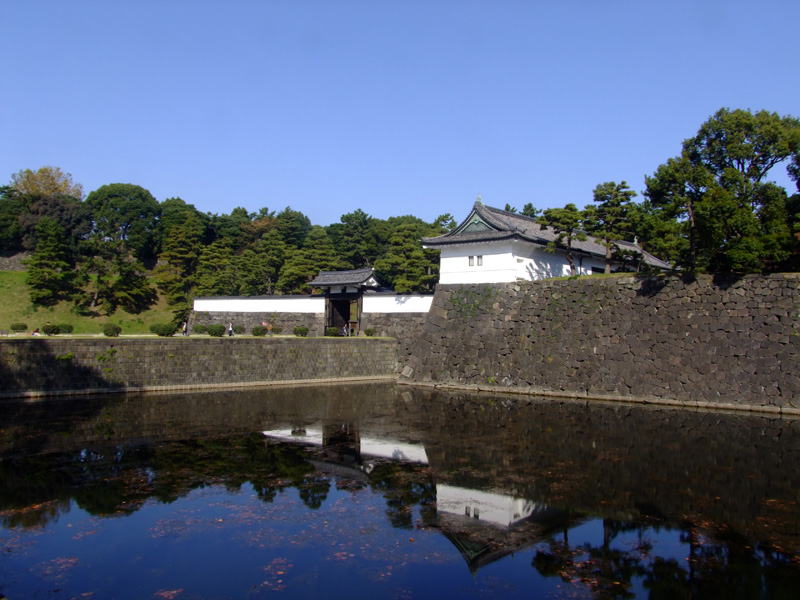
Sakurada Mon viewed from Gaisen Bori Moat
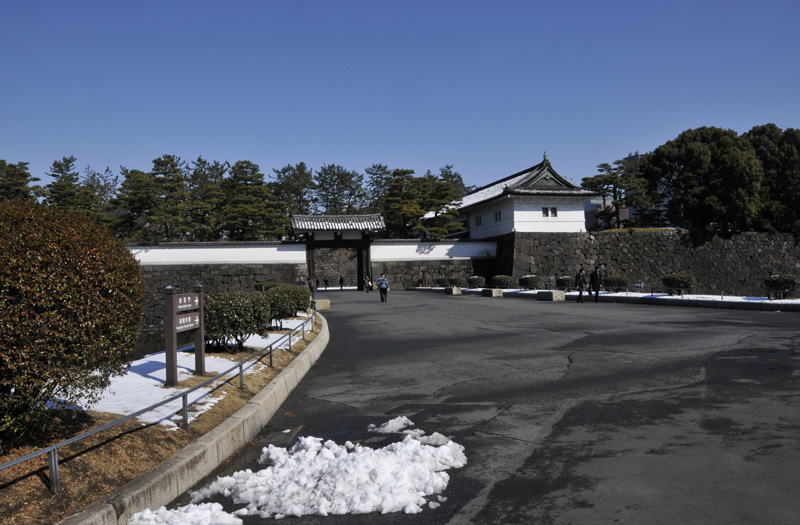
Snowscape of Sakurada Mon Gate (January 15, 2011)
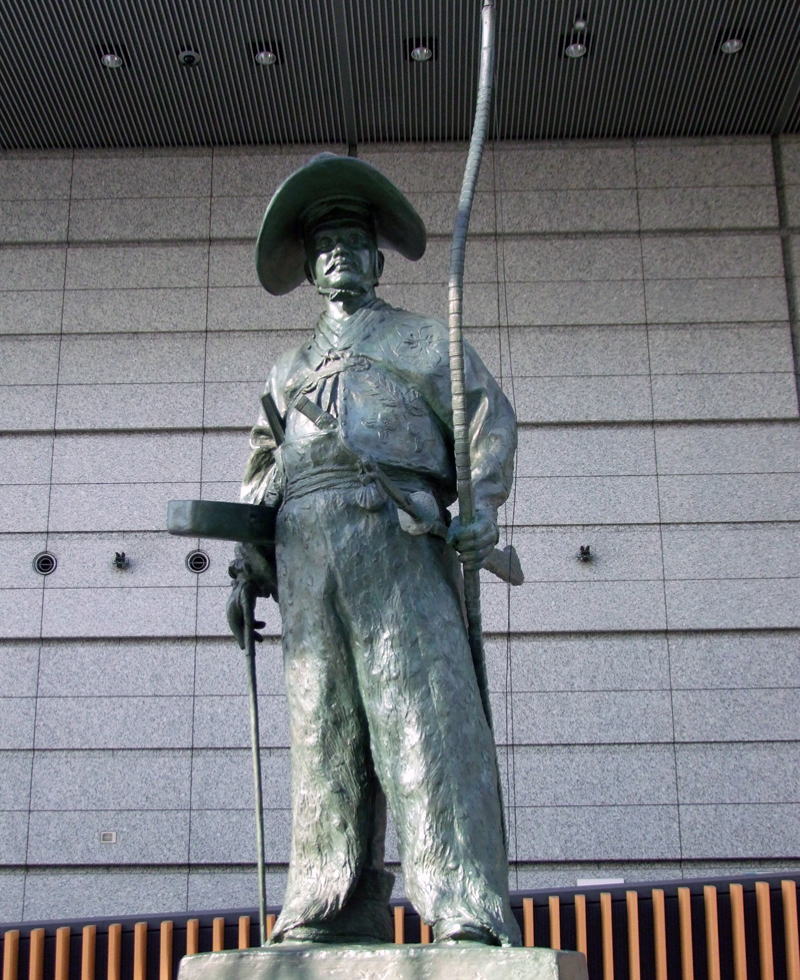
Statue of Ota Dokan
| Ota Dokan (1432-1486), a samurai and a skilled poet, was the son of Ota Sukekiyo the daimyo of Tamba (Part of Today's Kyoto and Hyogo). He succeeded his father in 1455 and in the next year built the castle of Edo upon the site on which the Imperial Palace now stands. After his death, the castle was abandoned and had to wait until Tokugawa Ieyasu took over. The statue of Ota Dokan was at the site of Tokyo Metropolitan Government in Marunouchi before but the metropolitan government building moved to Shinjuku in 1991 and today the statue is housed in Tokyo International Forum building which was built upon the site Tokyo Metropolitan Government used to be. |